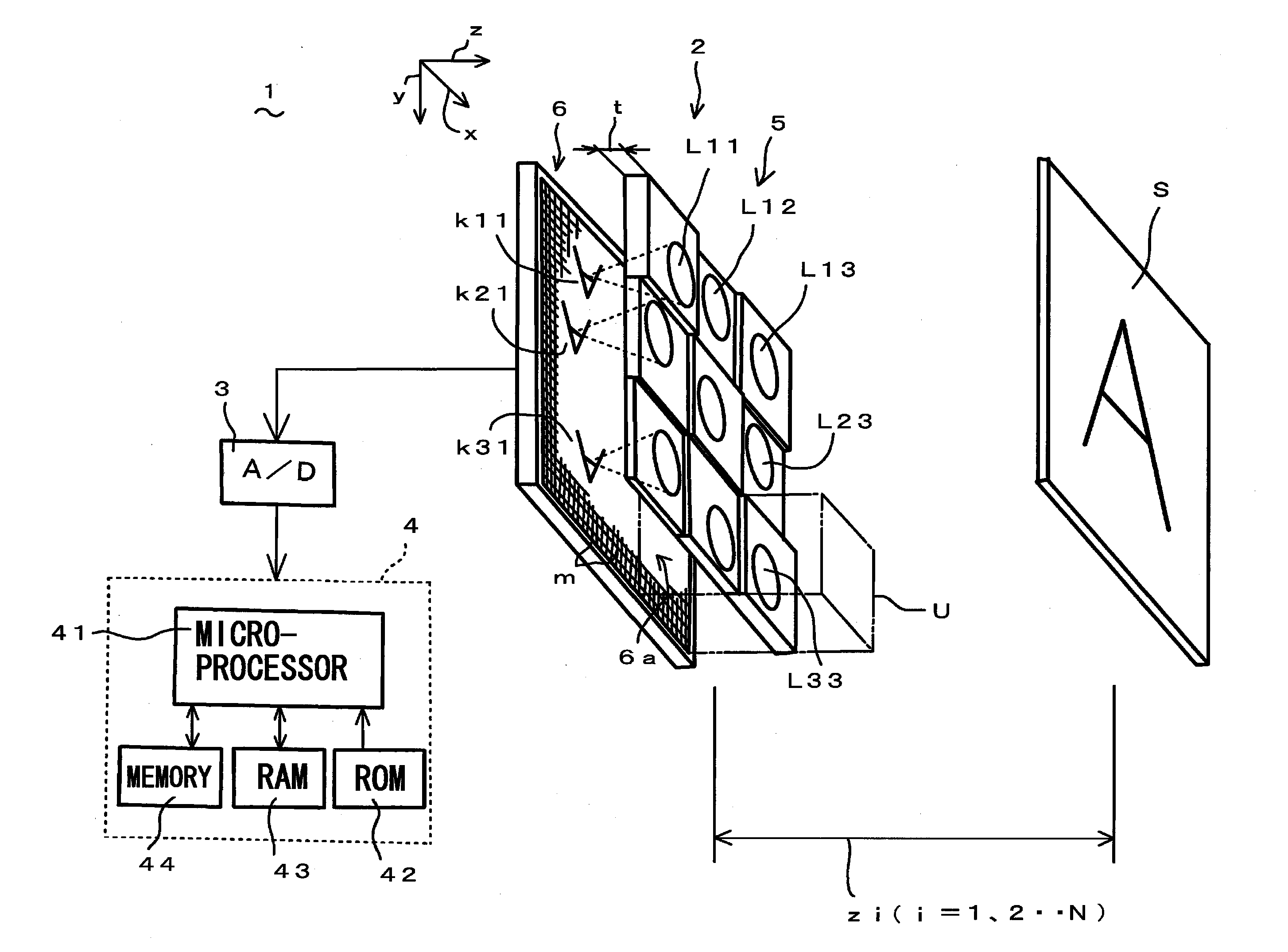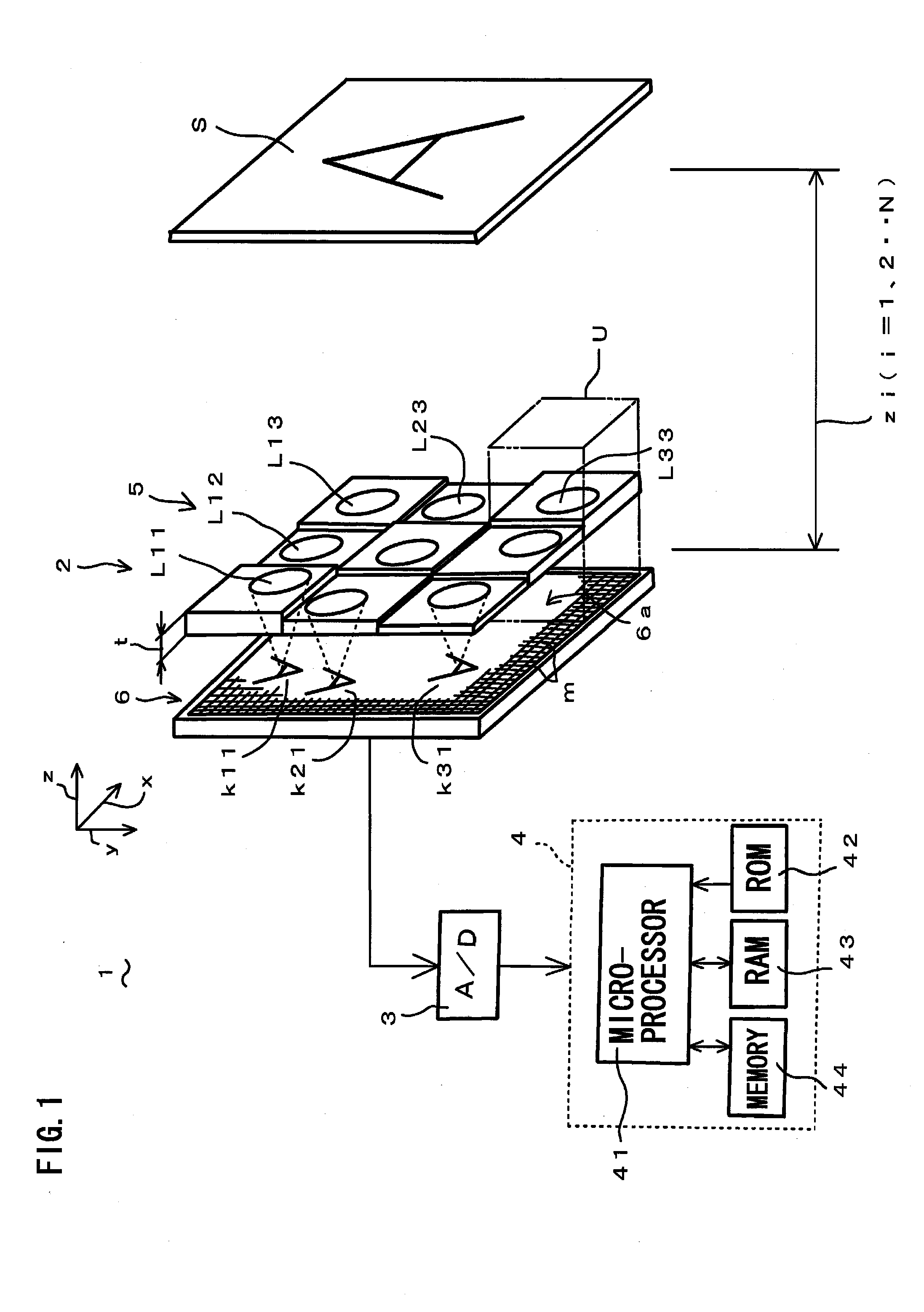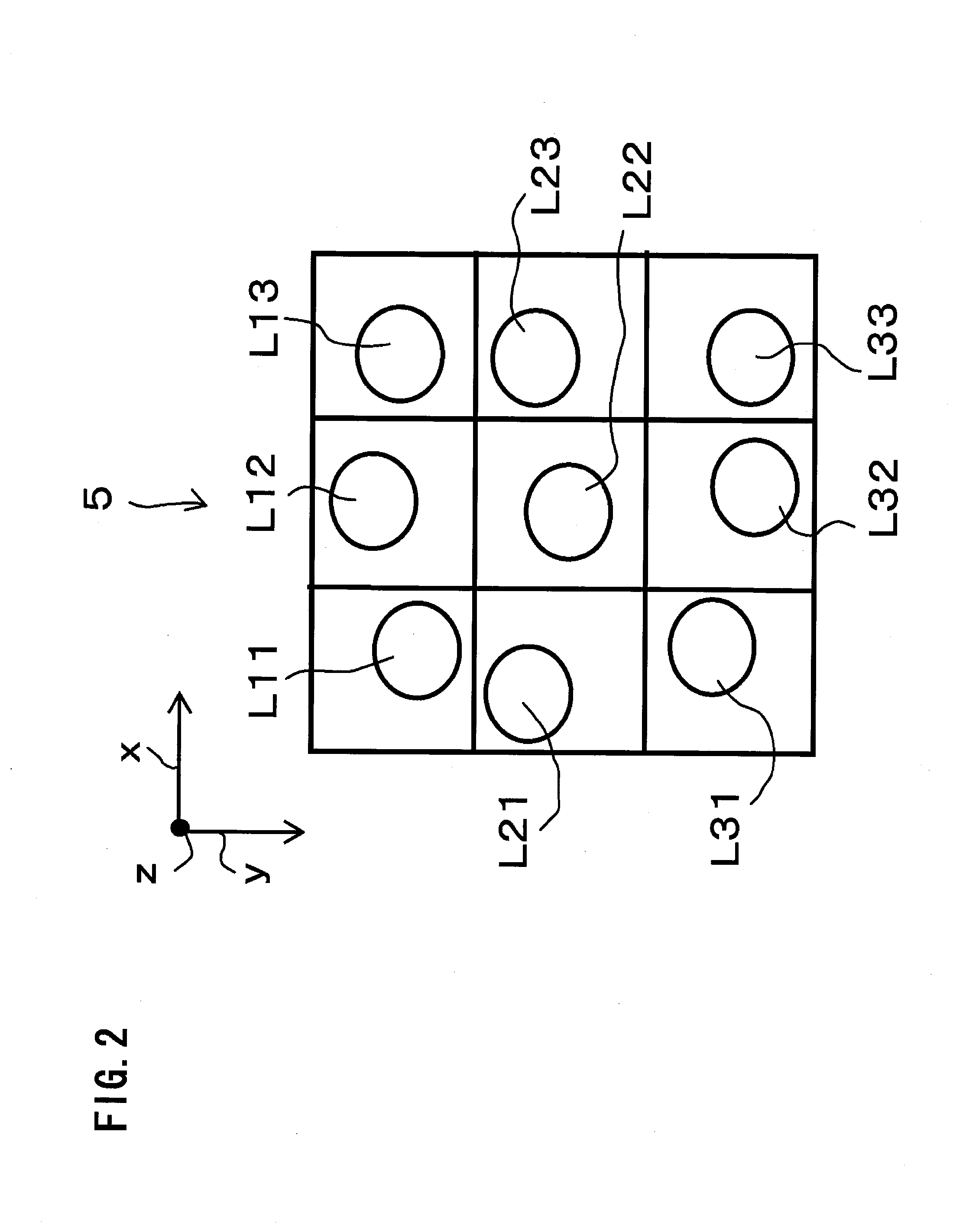Object Distance Deriving Device
a distance deriving and object technology, applied in the direction of distance measurement, instruments, television systems, etc., can solve the problems of inability to secure the eye imaging device, the size reduction of the eye imaging device adapted to cars, and the inability to accurately derive the object distance. , to achieve the effect of accurate derive the object distance and limited baseline length of the imaging devi
- Summary
- Abstract
- Description
- Claims
- Application Information
AI Technical Summary
Benefits of technology
Problems solved by technology
Method used
Image
Examples
first embodiment
[0029]Referring to FIG. 1 to FIG. 8, an object distance deriving device 1 according to a first embodiment of the present invention will be described. FIG. 1 is a schematic view, partly in block form, of an object distance deriving device 1 of the present embodiment. As shown in FIG. 1, the object distance deriving device 1 comprises a compound-eye imaging device 2 (claimed “imaging means” or “compound-eye imaging means”) and a distance calculation unit 4 (claimed “distance calculating means”) mainly composed of a microprocessor 41 for receiving, via an A / D (Analog-to-Digital) converter 3, image information captured by the compound-eye imaging device 2, and for calculating a distance (object distance) z between an object (target object to be imaged) S and the compound-eye imaging unit 2 (more specifically optical lens array 5) based on the received and digitized image information. The object S shown is two-dimensional (flat-shaped) for simplicity of description, but can be three-dime...
second embodiment
[0048]Hereinafter, an object distance deriving device according to a second embodiment of the present invention will be described. The object distance deriving device of the present embodiment is the same as the object distance deriving device 1 of the first embodiment, except that the arrangement of the optical lenses L11, L12 . . . L33 in the present embodiment is different from that in the first embodiment where the optical lenses of the compound-eye imaging device 2 are randomly arranged for the respective imaging units U. In the present embodiment, in order to increase a substantial amount of information of the captured images for deriving a more accurate object (target object) distance, the optical lenses L11, L12 . . . L33 are arranged to adapt to an optimum condition calculated by an optimizing method using an evaluation function to evaluate average errors of an object distance.
[0049]More specifically, the following equation (5) is an evaluation function C which represents a...
PUM
 Login to View More
Login to View More Abstract
Description
Claims
Application Information
 Login to View More
Login to View More - R&D
- Intellectual Property
- Life Sciences
- Materials
- Tech Scout
- Unparalleled Data Quality
- Higher Quality Content
- 60% Fewer Hallucinations
Browse by: Latest US Patents, China's latest patents, Technical Efficacy Thesaurus, Application Domain, Technology Topic, Popular Technical Reports.
© 2025 PatSnap. All rights reserved.Legal|Privacy policy|Modern Slavery Act Transparency Statement|Sitemap|About US| Contact US: help@patsnap.com



